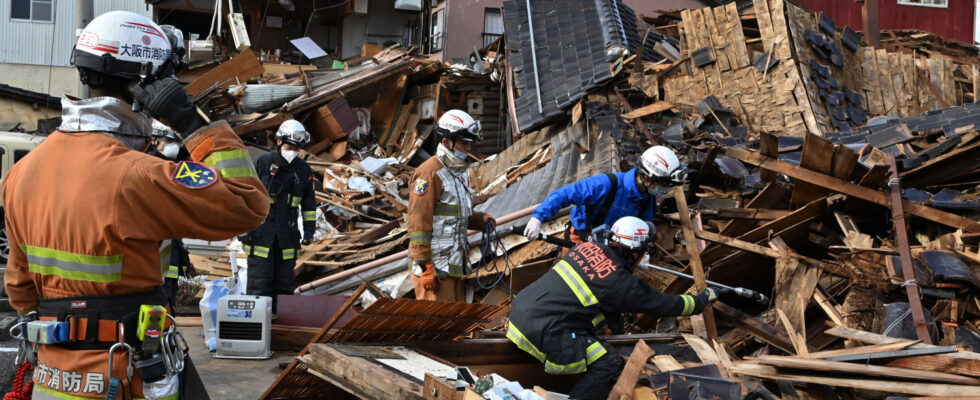According to a new count published this Tuesday, January 9 by the authorities, the 7.5 magnitude earthquake of January 1 in central Japan caused 202 victims. It is the deadliest natural disaster in Japan since giant floods in 2018.
Emergency services continue their efforts. The 7.5 magnitude earthquake on January 1 in central Japan killed 202 people, according to a new count released this Tuesday by the authorities of the Ishikawa department, where the disaster occurred.
The number of people still missing from authorities fell at the same time, reaching 102, compared to 120 according to previous figures. It is the deadliest natural disaster in Japan since giant floods in the west of the country in 2018, which left more than 220 dead. It is also the deadliest earthquake in the archipelago since those which struck the island of Kyushu (southwest) in 2016, causing nearly 300 deaths.
More than 3,000 residents still without electricity
Occurring on January 1 in the Noto Peninsula, at the northern tip of Ishikawa Prefecture, the powerful 7.5 magnitude earthquake and hundreds of other tremors that followed caused numerous buildings to collapse, sparked fires and damaged numerous infrastructures. More than a week after the disaster, more than 3,000 inhabitants of the peninsula are still cut off from the world while awaiting relief, which is slowed down by rain and snow, and the persistent blocking of roads due to landslides.
More than 28,000 people are still living in some 400 evacuation centers, and some of these shelters are overcrowded and lacking food and heating. Nearly 60,000 homes are still without access to running water and more than 15,000 remain without electricity on Tuesday. Japanese Prime Minister Fumio Kishida on Tuesday called on his ministers to “resolve” the problem of communities still isolated in the Noto Peninsula and “tenaciously continue rescue operations.” The government is also trying to transfer evacuees to centers outside the disaster areas, where the supply of basic necessities is not a problem.
